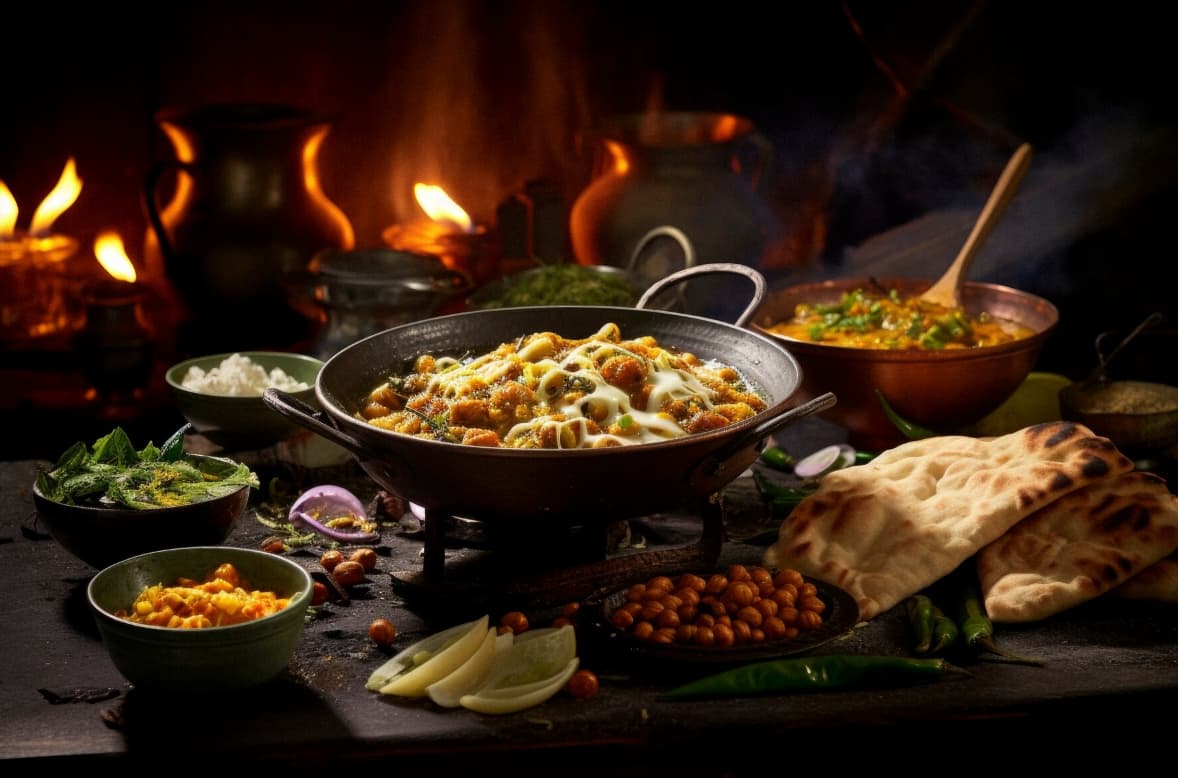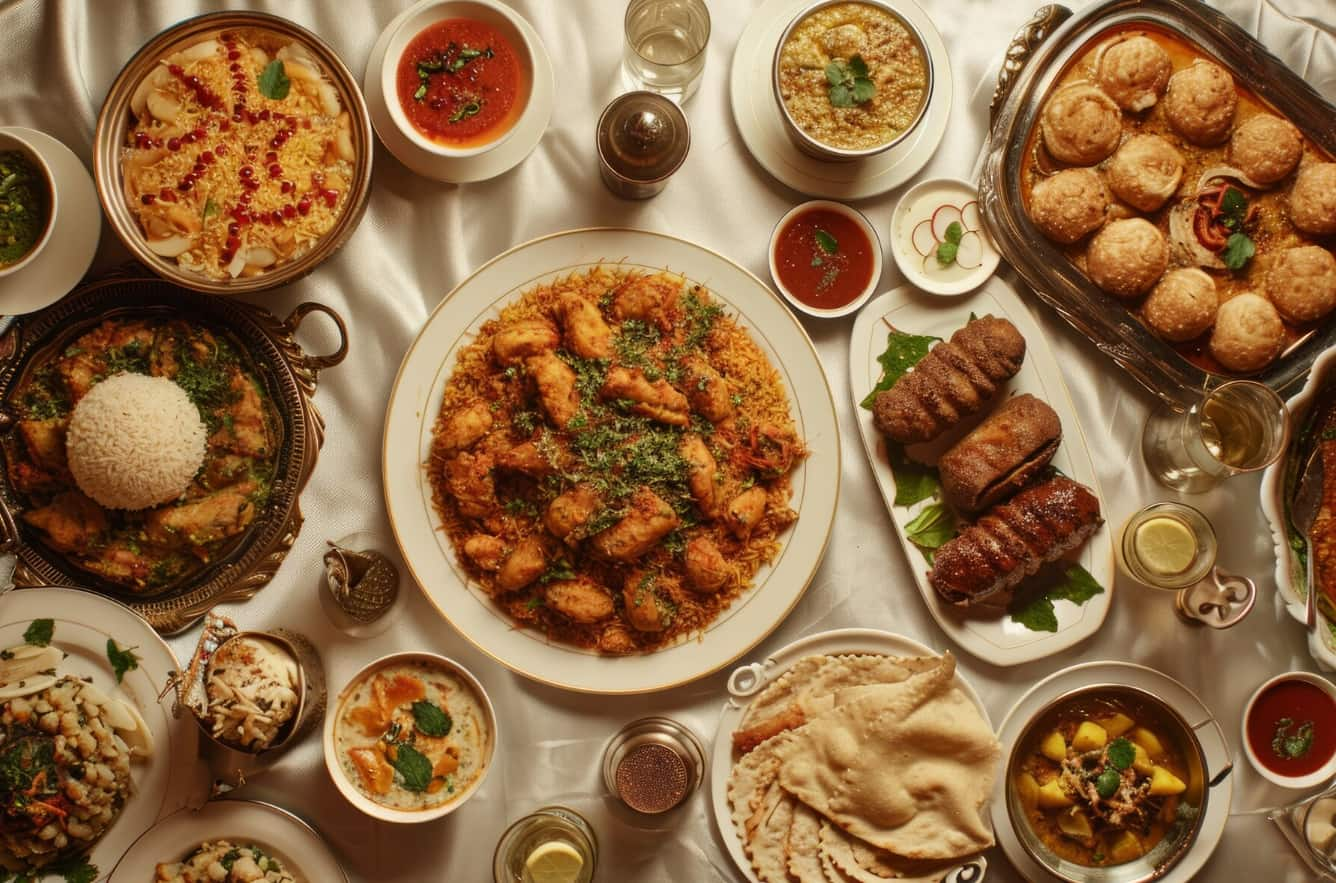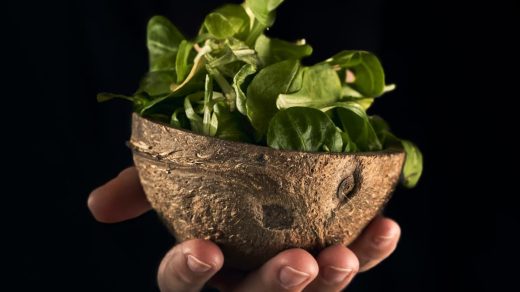Hey there, food lovers! Today, we’re going on a yummy trip to Bolivia. We’re going to talk about a special dish called chuñuphuti con mani tarija.
Don’t worry if you can’t say it right away – it’s a mouthful, but so is the dish!
This food comes from a place called Tarija in Bolivia. It’s not just any old meal – it’s packed with flavor and history.
Imagine biting into something that tells you a story about the people who made it. That’s what chuñuphuti con mani tarija does!
If you ever find yourself in Tarija, you’ve got to give this dish a try. It’s a great way to get to know Bolivian food. Trust me, your taste buds will thank you!
Chuñuphuti Con Mani Tarija

In this article, we’re going to dig deep into what makes chuñuphuti con mani tarija so special.
We’ll talk about what’s in it, how it’s made, and why people love it so much.
By the end, you might just be planning a trip to Bolivia to taste it yourself!
So, are you ready to learn about this tasty treat? Let’s dive in and discover the world of chuñuphuti con mani tarija together!
What is Chuñuphuti con Mani?
Let’s break down this funny-sounding name:
- Chuñu: This is a type of potato that’s been dried out.
- Phuti: It means “boiled” in the local language.
- Mani: This is just the Spanish word for peanuts.
- Tarija: The name of the place where this dish comes from.
So, put it all together, and you’ve got a dish made with dried potatoes and peanuts, boiled up in Tarija style!
Chuñuphuti con mani is a comfort food for many people in Tarija. It’s the kind of meal that makes you feel warm and happy inside.
Imagine a bowl full of soft, tasty potatoes mixed with crunchy peanuts. It’s a mix of textures that makes eating it fun.
This dish isn’t just tasty – it’s also a big part of Tarija’s history. The way they make the chuñu (dried potato) goes back to old Andean ways of keeping food fresh for a long time. It’s like taking a bite of history!
The Nutritional Benefits
Now, you might be thinking, “Is this just tasty, or is it good for me too?” Well, good news! Chuñuphuti con mani isn’t just yummy – it’s also packed with good stuff for your body.
Let’s break down the main ingredients:
- Chuñu (Dried Potato):
- Full of carbohydrates for energy
- Gives you fiber to help your tummy
- Has some vitamins and minerals
- Peanuts:
- Rich in protein to help build and repair your body
- Full of good fats that are heart-friendly
- Packed with vitamins like E and B
When you put these together, you get a meal that:
- Fills you up
- Gives you energy
- Helps your body in lots of ways
Here’s a simple table to show you what you’re getting:
| Nutrient | What it does for you |
|---|---|
| Carbs | Gives you energy |
| Protein | Helps build muscle |
| Fats | Keeps your heart happy |
| Fiber | Helps your tummy work well |
| Vitamins | Keeps your body running smoothly |
So, when you eat chuñuphuti con mani, you’re not just enjoying a tasty meal. You’re also giving your body a bunch of good stuff it needs!
Traditional Preparation Techniques
Making chuñuphuti con mani isn’t just cooking – it’s like a little ritual. The people in Tarija have been doing it the same way for a long time. Let’s walk through how they do it:
- Making Chuñu:
- First, they take potatoes and leave them outside in the cold.
- The potatoes freeze at night and thaw during the day.
- They do this for a few days until the potatoes dry out.
- This makes chuñu – a special kind of dried potato.
- Preparing the Base:
- They boil the chuñu in water until it’s soft.
- While that’s happening, they start making a tasty sauce.
- Making the Sauce:
- They chop up onions and tomatoes.
- These get fried with spices to make everything smell good.
- The sauce cooks until it’s thick and yummy.
- Adding the Peanuts:
- They toast some peanuts until they’re golden and crunchy.
- These get added to the dish at the end.
- Putting It All Together:
- The soft chuñu gets mixed with the tasty sauce.
- They sprinkle the crunchy peanuts on top.
- Sometimes, they add a bit of cheese or herbs for extra flavor.
The cool thing about this way of cooking is that it uses old techniques. The way they make chuñu helps keep potatoes good for a long time without a fridge. It’s smart cooking that’s been passed down for generations!
Where to Find Chuñuphuti con Mani in Tarija?
If you’re in Tarija and want to try this yummy dish, you’re in luck! There are lots of places where you can find chuñuphuti con mani. Here’s where to look:
- Local Markets: These are great spots to find real, homemade chuñuphuti con mani.
- Traditional Restaurants: Look for places that serve local food.
- Food Stalls: Sometimes you can find it at street food stands.
- Family-Run Eateries: Small, family-owned places often make the best version.
Tips for Finding the Best Chuñuphuti con Mani:
- Look for busy places. If lots of locals are eating there, it’s probably good!
- Ask around. Local people can tell you their favorite spots.
- Try different places. Each cook might make it a bit differently.
- Go at lunchtime. That’s when most people eat this dish.
Remember, the best chuñuphuti con mani is often found in the simplest places. Don’t be afraid to try a small, local spot – that’s where you’ll find the most authentic taste!
Enjoying Chuñuphuti con Mani in a Cultural Context
Eating chuñuphuti con mani isn’t just about filling your belly. It’s a way to dive into Tarija’s culture. Here’s how this dish fits into the bigger picture:
- Family Gatherings:
- Often made for big family meals
- Brings people together to share and talk
- Festivals and Celebrations:
- You might find it at local festivals
- It’s a way to celebrate Tarija’s food traditions
- Everyday Life:
- Some people eat it as a regular meal
- It’s comfort food for many locals
- Sharing Culture:
- Eating this dish helps you understand Tarija better
- It’s a taste of local life and history
When you eat chuñuphuti con mani, try to think about more than just the taste. Think about:
- The people who made it
- The history behind the dish
- How it brings people together
It’s like getting a little lesson in Tarija’s culture with every bite!
Variations of Chuñuphuti con Mani
Just like any popular dish, chuñuphuti con mani has different versions. Cooks in Tarija like to add their special touch.
Here are some ways they change it up:
- Spice Levels:
- Some make it mild
- Others add hot peppers for a kick
- Extra Veggies:
- Adding carrots for sweetness
- Mixing in peas for color
- Protein Additions:
- Some put in bits of meat
- Others add eggs for extra protein
- Texture Changes:
- Making it more soup-like
- Cooking it until it’s thicker
- Topping Choices:
- Sprinkling cheese on top
- Adding fresh herbs for extra flavor
Here’s a simple table showing some popular add-ins:
| Add-in | What it does |
|---|---|
| Cheese | Makes it creamy |
| Hot peppers | Adds spice |
| Meat | Makes it heartier |
| Fresh herbs | Adds fresh flavor |
| Eggs | More Protein |
Remember, no matter how it’s changed, the heart of the dish stays the same. It’s always about celebrating local flavors and traditions.
The Impact of Local Ingredients on Flavor
The taste of chuñuphuti con mani isn’t just about the recipe. It’s also about what goes into it. In Tarija, they use local ingredients that make the dish special.
Let’s look at how these local foods make a big difference:
- Potatoes:
- Tarija has special types of potatoes
- They taste different from potatoes in other places
- This changes the flavor of the chuñu
- Peanuts:
- Local peanuts might be smaller or have a stronger taste
- They’re often fresher, which makes them crunchier
- Spices:
- Local spices can have unique flavors
- They might be stronger or different from what you’re used to
- Vegetables:
- Onions and tomatoes grown in Tarija soil taste different
- The local climate affects how veggies grow and taste
Why does this matter? Because using local ingredients means:
- The dish tastes more authentic
- It supports local farmers
- The flavors change a bit with the seasons
So, when you eat chuñuphuti con mani in Tarija, you’re tasting more than just a dish. You’re tasting the local land, climate, and farming traditions. It’s like the whole area is on your plate!
Why Chuñuphuti con Mani Deserves Attention?
You might wonder, “Why should I care about this dish?” Well, chuñuphuti con mani is special for many reasons. Here’s why it’s worth noticing:
- It’s Super Tasty:
- Unique mix of flavors
- Satisfying texture combination
- It’s Part of History:
- Shows old food preservation techniques
- Connects people to their ancestors
- It’s Healthy:
- Good mix of nutrients
- Fills you up without unhealthy stuff
- It Brings People Together:
- Often eaten at family gatherings
- Part of community celebrations
- It’s Eco-Friendly:
- Uses local ingredients
- Doesn’t need fancy packaging
- It Supports Local Farmers:
- Ingredients come from nearby
- Helps keep local farming alive
- It’s Unique to Tarija:
- Can’t find it just anywhere
- Makes Tarija special
When you eat chuñuphuti con mani, you’re not just having a meal. You’re:
- Tasting history
- Supporting local culture
- Enjoying something truly special
It’s like a little treasure from Tarija that deserves to be known and loved!
How to Make Chuñuphuti con Mani at Home?
Want to bring a taste of Tarija to your kitchen? Here’s a simple way to make chuñuphuti con mani at home:
What You’ll Need:
- 2 cups chuñu (dried potato) or regular potatoes
- 1 cup roasted peanuts
- 1 onion, chopped
- 2 tomatoes, chopped
- 2 cloves of garlic, minced
- Salt and pepper to taste
- Oil for cooking
- Water
Steps:
- Prepare the Chuñu:
- If using chuñu, soak it overnight.
- If using regular potatoes, peel and chop them.
- Cook the Base:
- Boil the chuñu or potatoes until soft.
- Drain and set aside.
- Make the Sauce:
- Heat oil in a pan.
- Fry onions and garlic until golden.
- Add tomatoes and cook until soft.
- Combine Everything:
- Add the cooked chuñu or potatoes to the sauce.
- Mix well and add water if it’s too dry.
- Let it simmer for 10 minutes.
- Add the Peanuts:
- Crush the peanuts slightly.
- Mix them into the dish.
- Season and Serve:
- Add salt and pepper to taste.
- Serve hot and enjoy!
Tips:
- Can’t find chuñu? Regular potatoes work too!
- Like it spicy? Add some chili peppers.
- Want it creamier? Sprinkle some cheese on top.
Making chuñuphuti con mani at home lets you adjust it to your taste. Plus, it’s a fun way to bring a bit of Bolivia to your dinner table!
FAQs
Got questions about chuñuphuti con mani? We’ve got answers! Here are some things people often want to know:
- What does chuñuphuti con mani mean in English?
- It roughly means “boiled dried potato with peanuts” in the style of Tarija.
- Is chuñuphuti con mani vegetarian?
- Yes, the basic recipe is vegetarian. But some versions might add meat.
- Can I make it without chuñu?
- Yes, you can use regular potatoes if you can’t find chuñu.
- Is it a main dish or a side dish?
- It can be both! Some eat it as a main meal, others as a side.
- Is chuñuphuti con mani spicy?
- Not usually, but some people add spicy peppers to theirs.
- Can I find this dish outside of Tarija?
- It’s most common in Tarija, but you might find it in other parts of Bolivia too.
- Is it okay for people with nut allergies?
- No, it’s not safe if you’re allergic to peanuts.
- How long does it take to make?
- About an hour, not counting the time to soak chuñu if you’re using it.
- Can I make it ahead of time?
- Yes, you can make it and reheat it later. It often tastes even better the next day!
- What drinks go well with it?
- Many people enjoy it with chicha, a local corn drink, or a cold beer.
Remember, if you have more questions, don’t be afraid to ask locals when you’re in Tarija. They’ll be happy to tell you more about their favorite dish!
Also Check:
Conclusion: A Culinary Journey Awaits
Wow, what a trip we’ve been on! We’ve explored every nook and cranny of chuñuphuti con mani tarija.
Let’s wrap up what we’ve learned:
- It’s more than just food: This dish is a window into Tarija’s culture and history.
- It’s nutritious: Packed with good stuff your body needs.
- It’s versatile: Can be made in different ways to suit different tastes.
- It’s a local treasure: Made with ingredients that tell the story of Tarija’s land.
- It brings people together: Often enjoyed at family gatherings and celebrations.
But here’s the most important thing: chuñuphuti con mani tarija isn’t just something to read about. It’s something to experience!
If you ever get the chance to visit Tarija, make sure to try this dish. Sit down in a local restaurant, take a big spoonful, and let the flavors transport you.
Feel the crunch of the peanuts, taste the earthiness of the chuñu, and savor the rich sauce. As you eat, think about all the people who’ve enjoyed this dish before you, and all the stories it could tell.
Even if you can’t visit Tarija, you can still bring a bit of Bolivia to your home. Try making chuñuphuti con mani in your kitchen. Share it with friends and family.
Tell them about what you’ve learned. Food has a wonderful way of connecting us to places we’ve never been and people we’ve never met.
Remember, every bite of chuñuphuti con mani tarija is more than just a taste – it’s a journey. It’s a journey through history, through culture, and the heart of Tarija.
So whether you’re eating it in Bolivia or cooking it at home, take a moment to appreciate the story behind this simple yet amazing dish.
In the end, chuñuphuti con mani tarija reminds us that food is more than just fuel for our bodies. It’s a way to explore the world, to connect with others, and to keep traditions alive.
So here’s to chuñuphuti con mani tarija – may it continue to delight taste buds and warm hearts for generations to come!



